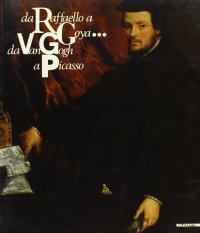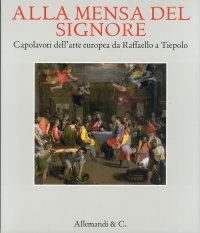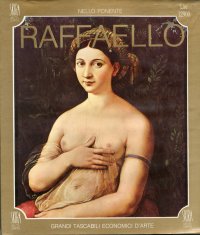Raffaello 1520-1483.
Roma, Scuderie del Quirinale, 5 marzo - 2 giugno 2020.
A cura di Faietti M. e Lafranconi M.
Milano, 2020; br., pp. 544, 400 ill. col., cm 22x28.
(Cataloghi di Arte Antica).
prezzo di copertina: € 46.00
|
Libri compresi nell'offerta:
Raffaello 1520-1483.
Roma, Scuderie del Quirinale, 5 marzo - 2 giugno 2020.
A cura di Faietti M. e Lafranconi M.
Milano, 2020; br., pp. 544, 400 ill. col., cm 22x28.
(Cataloghi di Arte Antica).
OMAGGIO (prezzo di copertina: € 46.00)
Da Raffaello a Goya... da Van Gogh a Picasso. 50 dipinti dal Museu de Arte di San Paolo del Brasile
Trento, Palazzo delle Albere, 18 settembre - 15 novembre 1987.
A cura di Camesasca E.
Milano, 1987; br., pp. 240, ill. b/n e col., tavv., cm 23x27.
(Grandi Mostre).
OMAGGIO (prezzo di copertina: € 25.00)
Alla mensa del Signore. Capolavori della pittura europea da Raffaello a Tiepolo
A cura di Giovanni Morello.
Torino, 2011; br., pp. 256, ill. b/n, 111 tavv. col., cm 24x28.
OMAGGIO (prezzo di copertina: € 35.00)
Raffaello
Milano, 1990; br., pp. 118, ill. col., tavv. col., cm 23x27.
(Grandi Tascabili Economici. 0009.).
OMAGGIO (prezzo di copertina: € 15.00)
Miseria e nobiltà. Gaetano Costa, la cucina dei contrasti
Milano, 2013; br., pp. 128, ill., cm 15x19.
(Chef!).
OMAGGIO (prezzo di copertina: € 12.90)
La cucina vip. Alessandro Circiello, le ricette per le star
Milano, 2013; br., pp. 128, ill., cm 15x19.
(Chef!).
OMAGGIO (prezzo di copertina: € 12.90)
Van Dyck's Hosts in Genoa. Lucas and Cornelis de Wael's Lives, Business Activities and Works.
Stoesser-Johnston A.M
Brepols Publishers
Testo Inglese.
Turnhout, 2018; 2 voll., ril. in cofanetto, pp. 1028, 683 ill. b/n, 40 ill. col., tavv., cm 19x25.
(Pictura Nova. 19).
collana: Pictura Nova
ISBN: 2-503-53175-X - EAN13: 9782503531755
Soggetto: Pittura e Disegno - Monografie
Periodo: 1400-1800 (XV-XVIII) Rinascimento
Luoghi: Europa
Testo in: 
Peso: 4.21 kg

Etica Coniugale. Per un Rinnovamento della Morale Matrimoniale
(A new) Torre Velasca? I grattacieli milanesi tra storia e progetto
Il Cavalier Malosso. Un artista cremonese alla corte dei Farnese
Gli Eredi dei Macchiaioli. Da Silvestro Lega a Plinio Nomellini
Gino Vernetto. Parella, le Opere, i Ricordi e le Testimonianze
La colonna sonora delle nostre vite. Canzoni di lotta del XX Secolo
Il restauro e la cura dell'albero. Mauro Civita tra vita e opere













